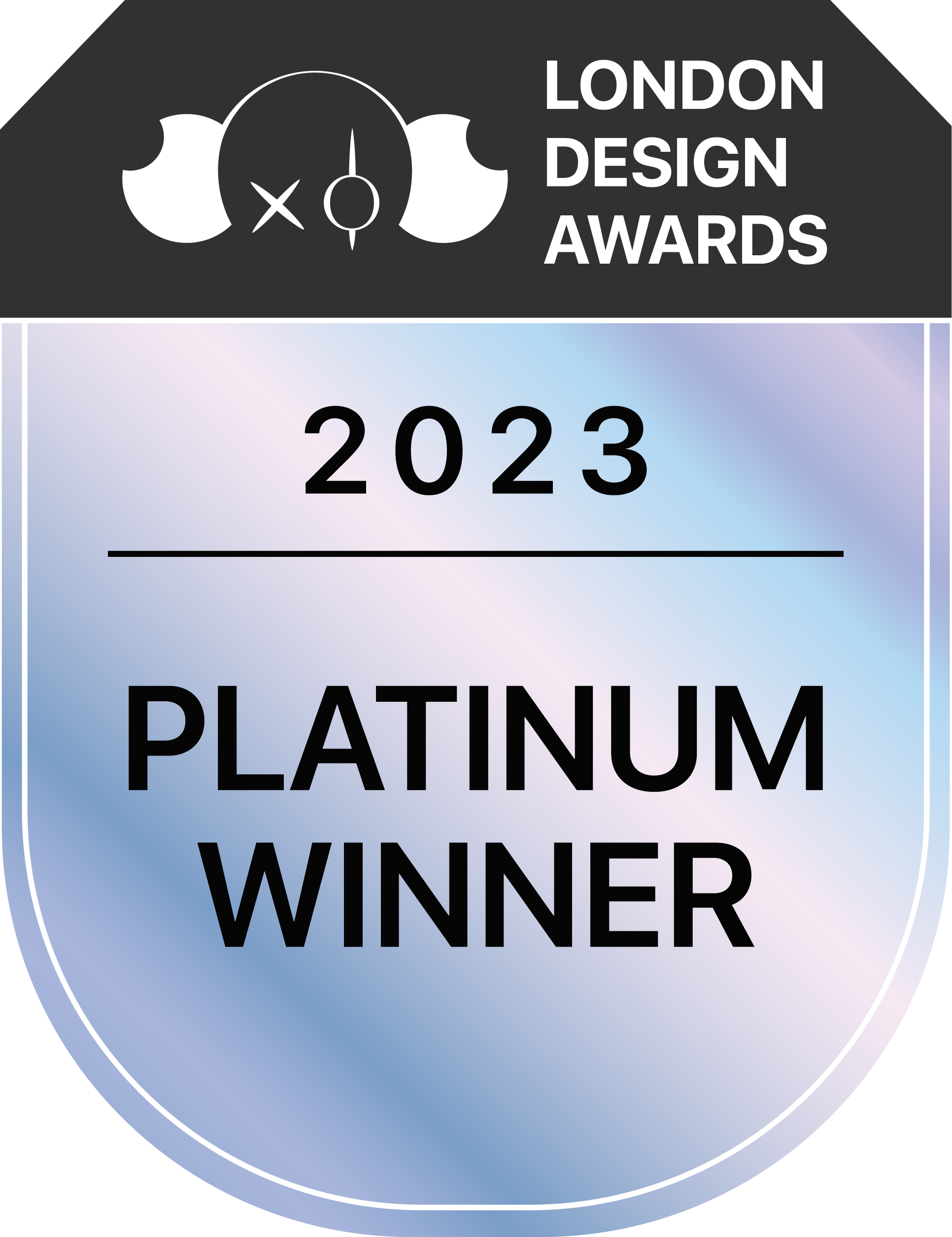
Xuefeng Li
1. Please give us a brief bio of yourself and your design background.
Hello, my name is Xuefeng Li, but you can call me Frank. Ever since I was a child, I've had a deep passion for architecture and aspired to become a successful architect. Originally from Beijing, China, I embarked on a journey to pursue my Master of Architecture degree at the University of Pennsylvania. Throughout my career, I have consistently been fascinated by the interplay between nature and architecture, constantly seeking to strike a harmonious balance between the two. In my spare time, I indulge in road trips to visit extraordinary buildings created by renowned architects, as my love for design knows no bounds.
2. What made you become/why did you choose to become a designer/artist?
My decision to become a designer was influenced by several factors. Growing up during a time when China was experiencing a rapid expansion of monumental architecture, I was captivated by the immense structures being built everywhere. This served as the initial impetus for my career choice.
As I got deeper into the world of architecture, I discovered influential figures like Frank Gehry and Zaha Hadid. Their creations transcended mere functional design and evolved into works of art that resonated with people on a spiritual level. Visiting their buildings firsthand solidified my belief that architecture can serve as a conduit for fulfilling people's aesthetic and emotional needs.
3. Tell us more about your agency/company, job profile, and what you do.
I currently work at SB Architects, a company specializing in the design of boutique hotels and custom homes. I also have my own design studio at home. Within my personal studio, I engage in experimentation and exploration, constantly pushing the boundaries of architecture and envisioning its future. One aspect that sets my personal studio apart is the freedom to identify societal issues and address them through design without having a specific client. This allows me to take a proactive approach in finding problems within society and utilizing design as a tool to offer innovative solutions.
4. What does “design” mean to you?
To me, design represents a means to achieve better or alternative solutions. It entails a comprehensive analysis of customer needs while maintaining an optimistic outlook towards the future. A successful design involves understanding the intricacies of the problem at hand and using creative thinking to develop innovative and effective solutions that enhance user experiences. Design is the bridge between functionality and aesthetics, combining practicality with an artistic vision to create impactful and meaningful outcomes.
5. What’s your favorite kind of design and why?
My favorite design is one that fulfills two essential criteria. Firstly, it must address a social problem and contribute to the betterment of society. Design has the power to solve real-world challenges and make a positive impact on people's lives, and this aspect resonates deeply with me. Secondly, I believe that design should be aesthetically pleasing. Beauty has the ability to uplift and inspire, and it plays a significant role in enhancing our environment. Aesthetically pleasing design has the potential to create a sense of joy, harmony, and well-being in our daily lives.
6. To you, what makes a “good” design?
In my perspective, a "good" design goes beyond superficial aesthetics. It is a result of thorough research, careful analysis, and understanding of the problem or context at hand. A good design is rooted in a solid foundation of knowledge and insights, allowing for a deep understanding of user needs, functional requirements, and environmental considerations.
7. How did you come up with the idea for your award-winning design?
The idea for my award-winning design originated from a powerful experience I had in 2018 when I visited the International Friendship Park at the San Diego-Tijuana border. During that visit, I had the opportunity to interact with DACA recipients and hear their stories. Witnessing their limited interactions with loved ones through the gaps in the border wall left a profound impact on me and sparked a series of contemplations.
I began questioning the role of architecture in addressing such social situations and the broader implications of building physical barriers. These reflections led me to envision an ideal society
8. What was your main source of inspiration for this design?
The main source of inspiration for this design was my travel experiences and the emotions I felt during those journeys. Exploring different places, immersing myself in diverse cultures, and witnessing the challenges faced by various communities sparked a sense of empathy and a desire to make a positive impact through design.
9. Do you think your country and its cultural heritage has an impact on your design process?
Absolutely, my country and its cultural heritage have a significant impact on my design process. China, with its rich history and cultural traditions, has deeply influenced my approach to design. The philosophy of Daoism, in particular, has taught me to work in harmony with nature and to seek balance and interconnectedness in my designs.
10. Congratulations! As the winner of the London Design Awards, what does it mean to you and your company and team to receive this award distinction?
Thank you for your kind words! Winning the London Design Awards is an incredible honor for me. It signifies a recognition of our hard work, creativity, and dedication to the field of architecture. This award distinction validates my design approach and serves as a testament to the quality and innovation of my projects.
11. Can you explain a bit about the winning work you entered into the London Design Awards, and why you chose to enter this project?
The winning work I entered into the London Design Awards was a personal research project that reflected my views on democracy, freedom, and the potential of architecture to address social issues. It was a project that delved into exploring how architecture can contribute to solving societal problems and promoting a better way of life for all individuals.
I chose to enter this project because it held deep significance to me. It represented my beliefs and aspirations as an architect, emphasizing the importance of creating inclusive and harmonious environments. By participating in the London Design Awards, I aimed to raise awareness among a wider audience, particularly influential decision-makers like politicians, about the potential of architecture to make a positive impact on society.
I wanted to stimulate critical thinking and encourage discussions around alternative solutions that benefit all human beings. By sharing my research and insights through this platform, I hoped to spark meaningful conversations and inspire individuals in positions of power to consider new approaches to problem-solving, guided by principles of democracy, freedom, and social justice.
12. What were the main challenges you faced during the design process, and how did you overcome them?
One of the main challenges during the design process was navigating the abundance of research information and distilling the most important elements for the design narrative. I overcame this challenge by organizing and prioritizing the data, seeking feedback from collaborators, and refining the design concept. Once the starting point was established, the rest of the design process became more manageable.
13. How do you think winning this award will impact your future as a designer?
Winning this award will have a positive impact on my future as a designer by providing validation and recognition for my work. It will boost my confidence and inspire me to continue pushing the boundaries of design. Additionally, the award will enhance my professional reputation, opening up new opportunities for collaboration, networking, and attracting potential clients. Overall, it serves as a reminder to keep striving for excellence and fueling my passion for creating impactful and award-worthy designs.
14. What are your top three (3) favorite things about the design industry?
Creativity; Each project is different; 'Making' things;
15. What sets your design apart from others in the same category?
What makes my design different from others in the same category is the perfect blend of a solid concept and my knack for creating stunning models and renderings. I believe in the power of unique ideas and strive to design spaces that are not only visually appealing but also meaningful. By skillfully translating these ideas into detailed 3D models and realistic renderings, I bring my designs to life and create an immersive experience. This sets my work apart and leaves a lasting impression on clients and viewers.
16. Where do you see the evolution of design industry going over the next 5-10 years?
One significant aspect that has gained momentum is the integration of artificial intelligence (AI) into design processes.
AI has the potential to revolutionize the design industry by automating repetitive tasks, providing data-driven insights, and augmenting the creative process. Designers can leverage AI-powered tools for tasks such as generative design, data analysis, prototyping, and user testing, enabling them to work more efficiently and explore a broader range of possibilities.
17. What advice do you have for aspiring designers who want to create award-winning designs?
My advice for aspiring designers who want to create award-winning designs is to be bold and take risks. Don't be afraid to push the boundaries, challenge conventional norms, and explore innovative ideas. It's important to embrace experimentation and think outside the box.
18. Who has inspired you in your life and why?
In my life, one of the biggest inspirations for me has been nature. The beauty, complexity, and harmony found in the natural world have continuously amazed and captivated me. Nature has a way of effortlessly balancing form and function, and its intricate systems and patterns have influenced my design thinking.
19. What is your key to success? Any parting words of wisdom?
My key to success is a combination of hard work and critical thinking. By putting in the effort and dedication required to excel in my field, I have been able to continually grow and improve as a designer. Additionally, maintaining a critical mindset allows me to challenge the status quo, think outside the box, and push the boundaries of innovation in my work.

